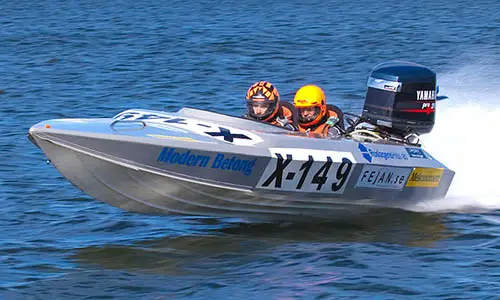A boat is defined as a small vehicle for travelling on water. The term refers to rowing, sailing or fishing boats. In everyday parlance, the word is also extended to include ships.
This simple definition does not encompass the magnitude of the impact of the evolution of this small vehicle of the history of mankind.
From earliest times man has had to live close to water bodies. All ancient civilizations developed along the banks of big rivers. It is only natural that man, being an animal that cannot stay afloat in water, would find a way of overcoming this obstacle.
FACT 1: Boats are the oldest means of transport. They were developed thousands of years ago. It all started with little rafts for sailing on the rivers. The earliest rafts were made of logs of wood tied together with reeds or creepers and steered with a pole. The first real boats were hollowed out logs.
FACT 2: The Egyptians did not build roads to travel within their empire. The used the river Nile which ran through their empire. In 4000 BC the Egyptians built the first sailing boats. They were made of reeds and had masts and sails. These boats could sail up and down the river Nile. By 2500 BC, the Egyptians had mastered the art of building wooden boats that could sail the oceans. There were no nails used to make the boats. The wooden planks were hooked together and tied with rope. There was a large steering oar at one end. The Egyptians revered boats. They believed that the Sun God travelled the sky in a boat during the day and sailed his boat in the underworld by night.
FACT 3: The Egyptians believed that after you died you needed a boat to take you to the heavens. Models of boats were often buried with the dead. Sometimes even real boats were buried. Thirty five boats were found in Pharaoh Tutankhamen’s tomb.
FACT 4: The Phoenicians lived in modern day Lebanon. This hilly country on the shores of the Mediterranean was not suitable for agriculture and had very few natural resources. However the cedar trees that grew there made excellent sailing ships. Between 1550 and 300 BC the Phoenicians built the first galley ships with two decks for rowing. Though these ships did not navigate open seas they hopped from coast to coast to reach Britain and even sailed around Africa, centuries before Vasco De Gama did.
FACT 5: To minimise the manpower needed for rowing the Phoenicians developed the art of angling the sails so that wind power could be used to control the ships direction. The also coated the lower parts of the ship’s hull with tar or pitch, creating the ‘black ship’ referred to in the ‘Odyssey’ written by the Greek poet Homer in 800 BC.
FACT 6: The Phoenicians carried cargo in their ships. This led to pirate ships appearing on the seas. Naval warfare started with ships being equipped with arrows to shoot at enemy sailors. Later ships were equipped with rams to sink the enemy ships.
FACT 7: The Vikings were the first to master the art of open sea sailing. The word Viking comes from the word ‘vikingr’ meaning pirate. They built ships that could land on harbourless shores. This gave them an advantage over their neighbours and helped them to conquer and raid many lands. They sailed from their homelands in Norway Sweden and Denmark to the British Isles, Iceland and Greenland. They even reached as far as Newfoundland which they called Vinland. They sailed up river to Russia, Germany and France. They conquered the Mediterranean and reached Italy.
FACT 8: In 1100 AD, the Chinese built huge trading ships, called junks. These ships were technological marvels, far superior to any of the ships made by the European powers. The Chinese ships made seven great expeditions to Ceylon (Sri Lanka) South India, Arabia and East Africa. The Chinese traded silk porcelain and lacquer ware for spices, rare woods, medicines, pearls and ivory from Arab and African traders.
FACT 9: The European powers with powerful navies went out and colonized the third world kingdoms, making Europe the most powerful nation in the nineteenth century. In 1492, Christopher Columbus sailed from Portugal to the Americas. Other European powers soon followed and the New World was born.
FACT 10: Today boats and ships are still vital to human interactions. Three quarters of all goods carried from country to country must cross water bodies in boats and ships.











Leave a Reply